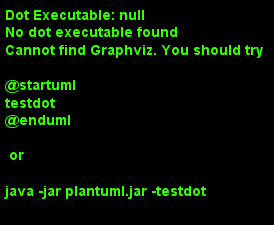Developer Guide¶
This guide is meant for people, who want to extend this package.
Compilation¶
First step is to get the package to compile. Therefore visit the compilation guide for your respective OS.
Adding new Classes¶
Coding guideline
Even though I also don’t stick rigidly to it, please follow the google coding style. If you don’t know it yet, then read it. It really benefits you as programmer in general.
The code is written in modern C++14. This means:
use smart pointers for storage (no raw ones): #include <memory>
use standardized integers: #include <cstdint>
use static compiler checks
Creating new files
The first step is to create a new source file (.cpp) and new header file (.hpp). Don’t forget the header guards, and also embed your code in the namespace qd. Example case:
my_class.hpp
#ifndef MY_CLASS_HPP
#define MY_CLASS_HPP
// includes
#include <cstdint>
namepspace qd {
class MyClass {
int32_t some_int;
MyClass(int32_t _some_int);
int32_t get_id();
};
} // namespace qd
#endif // MY_CLASS_HPP
my_class.cpp
#include <my_class.hpp>
namepspace qd {
MyClass::MyClass(int32_t _some_int)
: some_int(_some_int) // always initialize variables!
{
// nothing here
}
int32_t MyClass::get_id()
{
return this->some_int;
}
} // namespace qd
Adding files to the build process
The new source file (not header) must be added to the setup.py. There is a list variable called srcs_dyna. Simply append your new source file.
Connecting C++ and Python¶
You should already be able to compile the package now with your new source file (simply try it). It is now time to connect your C++ class to Python. The wrapper library for it is pybind11. First open the file, which compiles the API, called: pybind_wrapper.cpp. A class can be added quite easily:
pybind11::class_<MyClass, std::shared_ptr<MyClass>>
my_class_py(m, "MyClass", my_class_description);
The variable my_class_description is a const char* and contains the documentation of the file (numpydoc style). Documentation strings are added to the file docstrings.cpp, but in the beginning simply ignore this. The shared_ptr tells pybind11 to use a shared_ptr as holder type.
First we need to add the constructor of the class.
my_class_py.def(pybind11::init<int32_t>(),
"id"_a)
The first line tells pybind11 to make a constructor and the second one specifies, that the first argument has the name id. One may assign a default value here by the way. The literal ending _a is a string literal, telling pybind11, that we define the argument name here. Pybind11 handles the conversion of basic datatypes, such as int etc. automatically. It is getting more complicated, if a std::vector is needed as argument (there is a conversion routine in the utilities, which converts python containers to C++ containers).
Finally we also add the class function.
my_class_py.def("get_id",
&MyClass::get_id,
pybind11::return_value_policy::take_ownership)
The string get_id is the name of the function in python. The pybind11::return_value_policy explicitly specifies how to deal with the value in memory. For raw data, such as an int here, it does not really make any difference. Pointers though might need a different return policy.
Here we are, lets compile and run the code:
from qd.cae.dyna import MyClass
mc = MyClass(3)
mc.get_id()
>>> 3
Documentation¶
TODO
